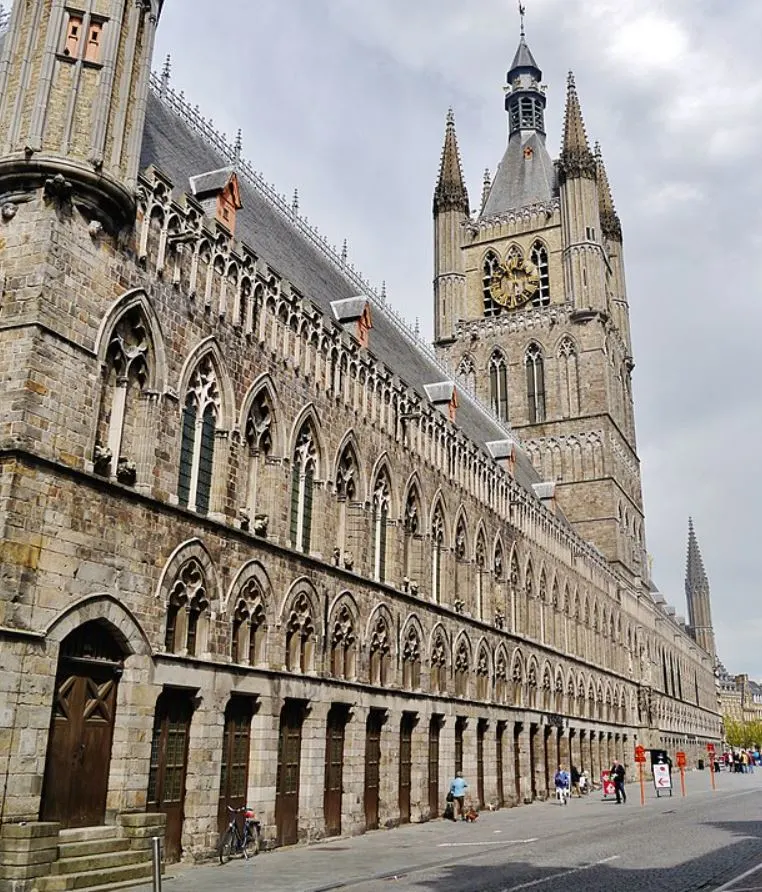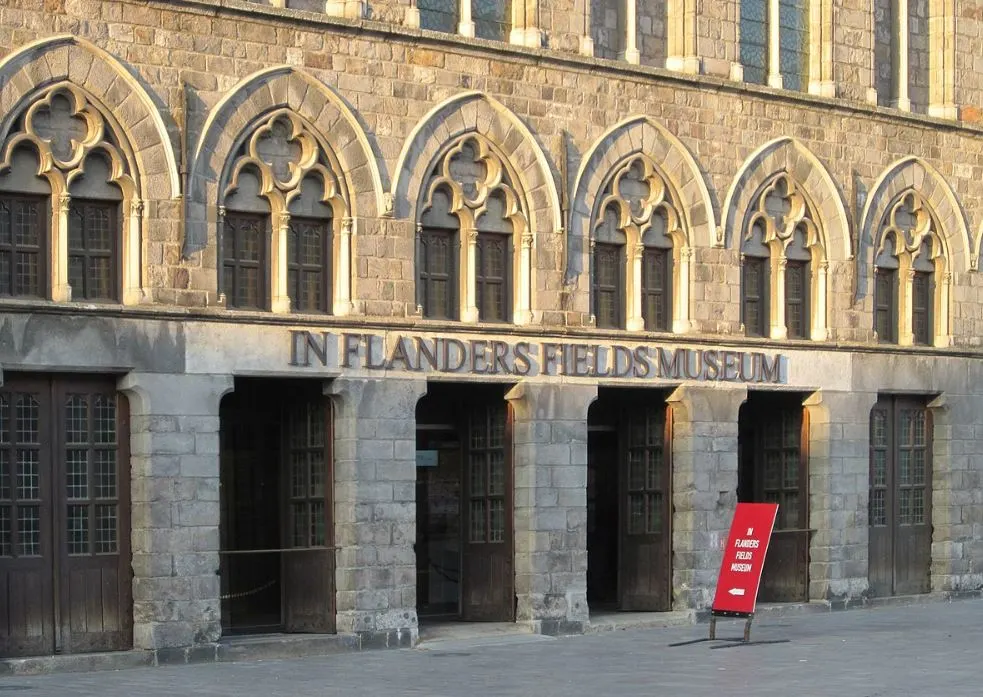Some of the best examples of Gothic architecture are the Gothic cathedrals constructed in Europe during the Middle Ages.
However, many secular buildings were constructed in this flamboyant style, one of which can be found in a small city in the utmost northwestern corner of Belgium.
Not only has this building international significance, but it also held a very remarkable record upon completion in the early 14th century.
In this article, you’ll discover some of the most interesting facts about the Ypres Cloth Hall, one of the most fascinating buildings in Belgium.
1. It faces the main market square in the heart of the city of Ypres
The Ypres Cloth Hall is locally known as the Ieper Lakenhal and can be described as one of the most stunning Gothic buildings in the world.
Ypres or Ieper is a relatively small city with about 35,000 inhabitants in the western part of the province of West Flanders of Belgium. The French border isn’t too far away, nor is the Wallonian border.
Cloth halls were commercial structures that were constructed during the Middle Ages, all the way up to the 18th century. They were usually built on the main market square and this is also the case here.
This monumental medieval structure faces the Grote Markt of Ypres and is surrounded by multiple other historic buildings.

2. The building was constructed in the 13th and early 14th centuries
The reason why this building was constructed in such a monumental fashion was to emphasize the booming cloth industry of the city.

Ypres was a wealthy city during the Middle Ages and the city’s cloth hall emphasized this.
It was also located strategically as it could be reached by boat from the Ieperlee, a canal that has since been covered.
The construction of the Ypres Cloth Hall started in the 13th center and was completed in 1304, well over 700 years ago.

3. The Cloth Hall held a remarkable record upon completion in 1304
I can only imagine the bustling atmosphere in and around this building during the city’s heydays in the 13th and 14th centuries. It was full of stalls with people trying to sell textiles.
The building is 125 meters (410 feet) long which made it the largest commercial building in Europe upon completion in the early 14th century.

4. The most notable feature of the Cloth Hall is the amazing belfry
The entire façade of the building is lined with niches, windows, and pointy arches, typical elements of Gothic architecture.
The most notable feature is the belfry, a square tower that is topped with 4 turrets and a spire and which is equipped with 49 bells.
The top of the belfry is decorated with a gilded dragon that overlooks the city. It stands 70 meters (230 feet) tall, the perfect height to be used as a watchtower for multiple centuries.

5. A small building was constructed against the east side during the Renaissance
When you take a closer look at the eastern side of the Ypres Cloth Hall you’ll notice that there’s a structure built against it that doesn’t really fit in.
This elegant building embodies the harmonious ideas of Renaissance architecture and was constructed between 1619 and 1622.
It’s called the “Nieuwerck” and served as an important civic building called her “Schepenhuis” until it was repurposed during the French Revolution in 1794.
It served once again as the beautiful city hall of Ypres between the 1950s and 2016.

6. The original Cloth Hall was completely destroyed during World War I
The Gothic building we can admire today is not the original medieval structure because it was just about completely flattened during World War I.
Ypres was a crucial city during this devastating event between 1914 and 1918 and was heavily shelled. The result of this artillery fire can be seen in the image below.
It took a while before both the Ypres Cloth Hall and adjoining Nieuwerck were reconstructed. The cloth hall was rebuilt between 1933 and 1967 and looks exactly the same as it did before.

7. The building houses the In Flanders Fields Museum
The cloth hall is the home of a museum dedicated to World War I called the “In Flanders Field Museum.” It’s located on the second floor of the cloth hall.
Museums like this are important in my opinion because they don’t attempt to glorify the war but serve as a reminder of its futility.
Ypres and its surroundings served as the frontline for an extended period of time and the area is full of cemeteries that serve as the final rating place of WWI soldiers.

8. Only the central niches of the building feature sculptures
Because of the devastation during World War I, many original decorations have been lost. That’s why most of the niches on the long façade of the building are empty today.
Some sculptures have been returned to their niches, including those present just below the belfry which depict important people in the history of the Ypres Cloth Hall.
From left to right you can find:
- Count Baldwin IX of Flanders and Mary of Champagne – The construction of the cloth hall began during their reign.
- Our Lady of Thuyne – She is the patron saint of the city of Ypres.
- King Albert I and Queen Elisabeth – The Belgian monarchs when the reconstruction of the cloth hall began.

9. The High Court Building of Calcutta was modeled on the Ypres Cloth Hall
The design of the Gothic building was highly influential and served as the prototype for cloth halls that were constructed all around Europe during the Middle Ages and beyond.
Even more fascinating is that it also served as inspiration for the design of the Calcutta High Court building which houses the oldest High Court in India.
This building was completed in 1862 after a Letters patent was granted by Queen Victoria.

10. It was inscribed as a UNESCO World Heritage Site in 1999
The Ypres Cloth Hall is one of the 56 buildings in Belgium and France that became a UNESCO World Heritage site in 1999.
This collection of structures is known as the “Belfries of Belgium and France” and the organization describes them as follows:
Built between the 11th and 17th centuries, they showcase the Roman, Gothic, Renaissance, and Baroque styles of architecture. They are highly significant tokens of the winning of civil liberties and they came to represent the influence and wealth of the towns.

